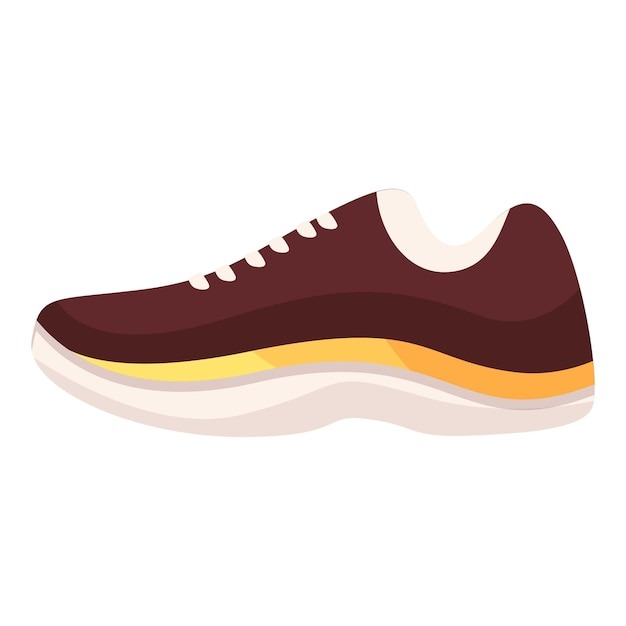Physical Address
304 North Cardinal St.
Dorchester Center, MA 02124
Physical Address
304 North Cardinal St.
Dorchester Center, MA 02124

Drawing sports shoes can be an enjoyable and rewarding endeavor, whether for a fashion designer, an artist, or anyone looking for a creative hobby. Understanding the essentials of how to draw sports shoes serves as the foundation for creating realistic and appealing drawings. Sports shoes vary widely in style, structure, and purpose. As a result, capturing the details and characteristics that differentiate one shoe from another can be a unique challenge.
Before you dive into your sketch, it’s crucial to familiarize yourself with the basic outline and structure of sports shoes. This includes recognizing the typical shape, construction, and features like laces, soles, and patterns. Begin by observing different types of sports shoes and notice the common features they share. Paying close attention to these details will aid in producing an accurate depiction.
Additionally, it’s beneficial to have a grasp of the dynamics of sports shoes. They’re designed for movement, so it’s important to reflect this in your drawings. You will learn to illustrate the flexibility and support that these shoes provide to athletes and casual wearers alike. By considering these aspects, your drawings will not only be correct in form but will also convey the proper function and spirit of sports shoes.
In this guide on how to draw sports shoes, we’ll start with the necessary materials you will need and then proceed with guiding you through the creation process, from the initial shapes and proportions to the intricate details and finishing touches. With practice and application of the provided tips, you’ll be able to draw sports shoes that look good on paper and are true to their real-world counterparts.
To begin drawing sports shoes, you need certain materials. Quality tools make the drawing process smoother and the results more professional. Here’s a list of what you’ll need:
Arrange your materials and create a comfortable workspace. Good lighting is important as it helps you see details clearly. Now, you are ready to start sketching sports shoes with confidence.

When starting your drawing, first focus on the basic shapes and proportions. This step is crucial as it lays the groundwork for the entire sketch. Begin with broad strokes to outline the general silhouette of the sports shoe. Look for simple geometric shapes — rectangles for the sole, ovals for the body, and curves for the opening where the foot enters. Once you’ve established these fundamental shapes, refine them to match the unique style and dimensions of the sports shoe you’re drawing.
Consider the perspective as well. When drawing sports shoes, you often capture them at an angle or in a way that shows depth. To achieve this, the front of the shoe should appear larger and taper towards the back. Take special care with the sole — it’s typically thicker at the heel and gets thinner towards the toes.
Pay attention to the proportions between different parts of the shoe. The sole should be proportional to the upper part, and the laces need to be spaced out evenly. Sketch lightly at first to make adjusting lines easier. Remember that accuracy in this stage is key; if the proportions are off, the finished drawing might not resemble a sports shoe.
To sum up, always begin with geometric shapes, consider the angle and perspective, and ensure that all parts are in correct proportion to one another. These early steps are vital for creating a realistic representation of sports shoes.
Once you’ve nailed down the basic shapes and proportions, it’s time to infuse your sports shoe sketch with life and personality. Starting from the top, begin adding the laces. Ensure the laces look natural by drawing them with a slight curve instead of straight lines. Remember, they should follow the shoe’s contour.
Next, sketch the eyelets or the holes where the laces come through. They are often in even numbers and should be aligned symmetrically on either side of the shoe’s opening. Add the tongue of the shoe, which usually sits underneath the laces. It’s slightly padded, so give it a bit of volume.
Move to the sides of the sports shoe. Here, you need to illustrate the logo or any unique designs that brands commonly feature. Keep your hand steady and try to replicate the branding accurately. Now focus on the stitching lines—they add to the shoe’s texture and realism.
The sole requires special attention because it has diverse patterns and textures. Some have simple lines while others feature intricate designs. Observe the pattern on a real shoe and try to replicate it closely.
Finally, do not neglect the inside of the shoe. Although it’s not always visible, adding a hint of the interior can make your drawing more complex. Include details like the inner lining and the insole. You may use light shading to hint at these parts.
In this phase, adding small details and paying attention to the brand elements can really make your drawing stand out. Keep your pencils sharp, and your eraser handy for the fine detail work. With patience and attention to detail, your sports shoe sketch will start to look more professional and true to life.

Adding shade and texture is key to making your sports shoe drawing look realistic. Here are some techniques:
For shading, use a variety of pencils. Soft pencils like 4B or 6B work well for dark, rich shades. Use 2H for subtle textures.
Observe where the light hits and where the shadows fall on a sports shoe. Place your shadows correctly to create depth.
Use short lines, cross-hatching, and stippling for different textures on the shoe’s surface. Mix techniques for a natural look.
Smooth out pencil strokes with blending stumps or cotton buds for gradations. This technique is great for a seamless transition between light and dark.
Use an eraser to lift graphite for highlights. It helps to define edges and bright spots like the reflection on shiny materials.
By mastering these shading and texturing techniques, your sports shoe drawings will gain a three-dimensional quality and a sense of movement.
Drawing different types of sports shoes requires observation and an understanding of their unique features. Here are some tips to guide you:
Start by studying the specific sports shoe type you wish to draw. Running shoes have different soles and shapes than basketball shoes. Capture the unique elements that define each shoe type.
Pay attention to design features. Running shoes may have more mesh for breathability, while hiking shoes show rugged soles for grip. Highlighting these differences will make your sketch more authentic.
Consider the shoe’s purpose. Soccer cleats will show studs on the bottom, while weightlifting shoes might have a flatter sole. Showcasing functionality adds realism to your drawings.
Keep reference images handy. They help you grasp the exact appearance and intricate details of every sports shoe type.
Ensure consistent proportions when drawing different angles or sizes. Practice drawing one type multiple times to maintain accuracy.
By applying these tips and focusing on the distinct characteristics of various sports shoes, your drawings will reflect the diversity and specificity found in real-world sports footwear. Remember, practice is key to mastering the art of drawing different types of sports shoes.

After adding the key details and textures, it’s time for final refinements. These small changes can have a big impact on the overall quality of your sports shoe drawing. Here are some steps to polish your work:
By following these steps for finishing touches, your drawing of sports shoes will look well-defined and professional. Remember, details matter. A careful review and thoughtful adjustments can transform a good sketch into a great one.
Once you’ve mastered the basics of how to draw sports shoes, it’s time to challenge yourself with practice projects. Drawing sports shoes from different angles will sharpen your skills and add depth to your portfolio. Variety is key to exploring the dynamic shapes and functions of sports shoes.
Start by choosing different positions for your sports shoe subjects. Try sketching a side view, then shift to a three-quarter view and finally, attempt a dynamic action pose. Remember the essential steps you’ve learned when beginning your drawing. Outline the basic shapes and proportions while keeping in mind the perspective of each angle.
For the side view, focus on the profile of the shoe, showing the sole thickness and arch. When drawing the three-quarter view, emphasize the curvature where the shoe wraps around the foot. For action poses, convey the flexibility of the shoe as it might appear in mid-stride or during a powerful jump.
Here are some angle-specific tips for your practice projects:
Always refer to real sports shoes or high-quality images for guidance. Pay attention to subtleties like shadows and highlights—they’ll change with the shoe’s orientation. Keep practicing these views consistently. With time, your ability to draw sports shoes from any angle will improve dramatically.
Drawing sports shoes from different perspectives not only boosts your drawing capability but also prepares you for more complex projects. Whether for personal enjoyment or professional enhancement, these practice projects are pivotal in your journey as an artist. Keep sketching regularly, and watch your sports shoe drawings come to life from every angle.